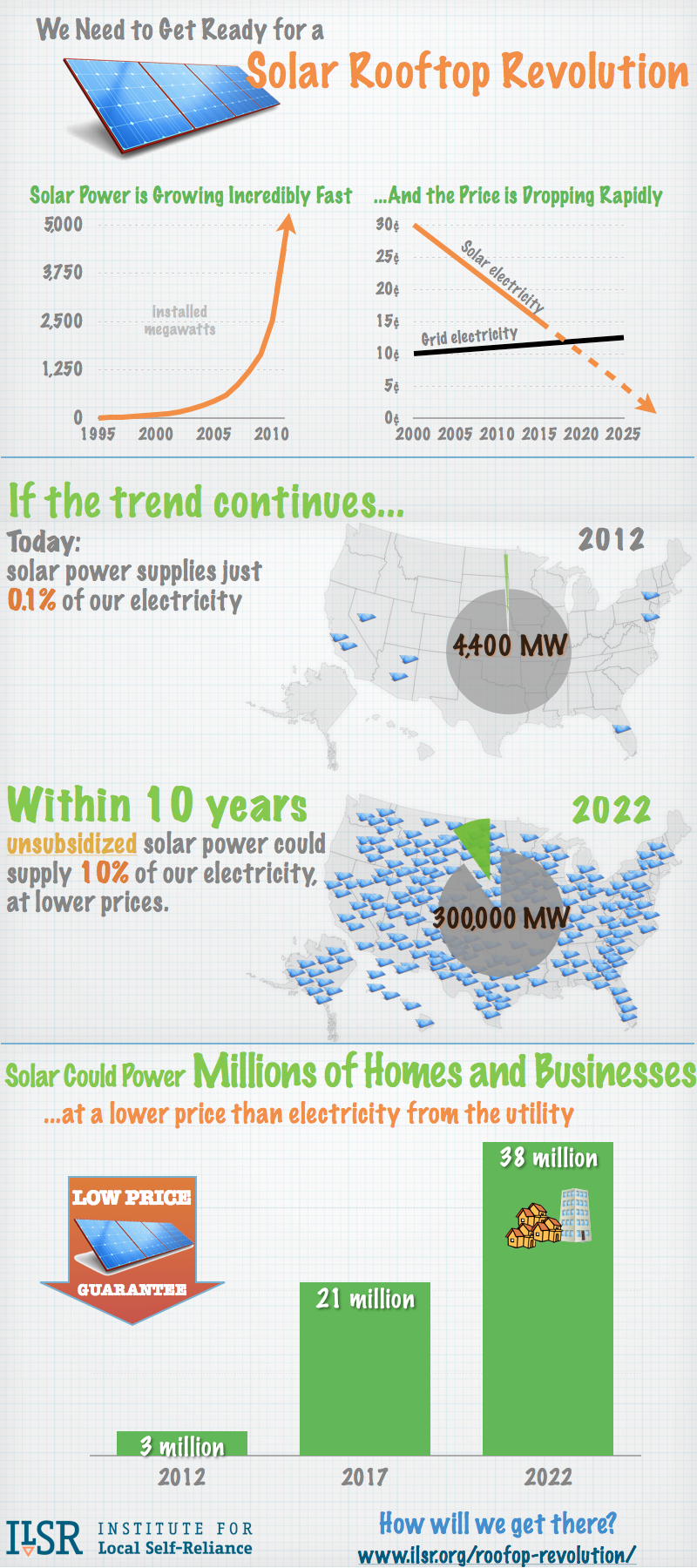The Coming Solar Electricity Transformation
The Coming Solar Electricity Transformation
John Farrell
June 11, 2013
Solar cells are unusual in that they were cost-competitive from the get-go. From the Apollo space program to highway signs to lighting for buoys, solar could replace highly expensive power from batteries or other sources and eliminate the need for the construction of electric distribution lines.
When the Institute for Local Self-Reliance was founded in 1974, the first factory producing solar cells for terrestrial applications had just opened in Gaithersburg, Maryland. The cost of solar power was over $3.00 per kilowatt-hour (kWh), com- pared to $0.03 per kWh for grid electricity. The output from that factory the first year was sufficient to power only a few dozen homes. By the late 1980s, the price of solar was low enough that solar cells were finding their way to second homes and remote cabins off the grid. In 1990, the total installed capacity of solar was 200 megawatts (worldwide, with about 25 percent in the U.S.), sufficient to power 4,000 homes. During the ensuing decade, federal and later state incentives for solar ushered in the era of grid-connected solar. By 1999, grid connected solar projects exceeded non-grid application.
By 2000, sufficient solar cells were installed to power 135,000 homes (with just over 20 percent in the U.S). The cost of solar was $0.50 per kWh, equivalent to an installed cost of approximately $10 per Watt. Since 2000, solar electricity production has grown exponentially. The annual installed solar capacity first exceeded 1 gigawatt (GW = 1,000 MW) in 2002 (globally).
Cost of Residential Solar v. U.S. Residential Retail Electricity Price (Nominal) By the end of 2010, installed solar capacity in the U.S. alone exceeded 2.5 GW (sufficient to power 400,000 homes) and global capacity was over 40 GW, sufficient to power 8 million homes. Annual solar module production exceeded 30 GW worldwide. As production has increased the cost of solar has fallen. Since 2006, the cost of solar has dropped by 58 percent – 10 percent per year.
Grid connected solar is on the verge of becoming competitive — without incentives — with conventional electricity. In 1974, solar electricity cost more than 100 times the residential retail electricity rate, today the differential is 2 times or less in many communities...
This is the first of five parts of our Rooftop Revolution report being published in serial. Download the entire report and see our other resources here.
http://www.ilsr.org/rooftop-revolution/

